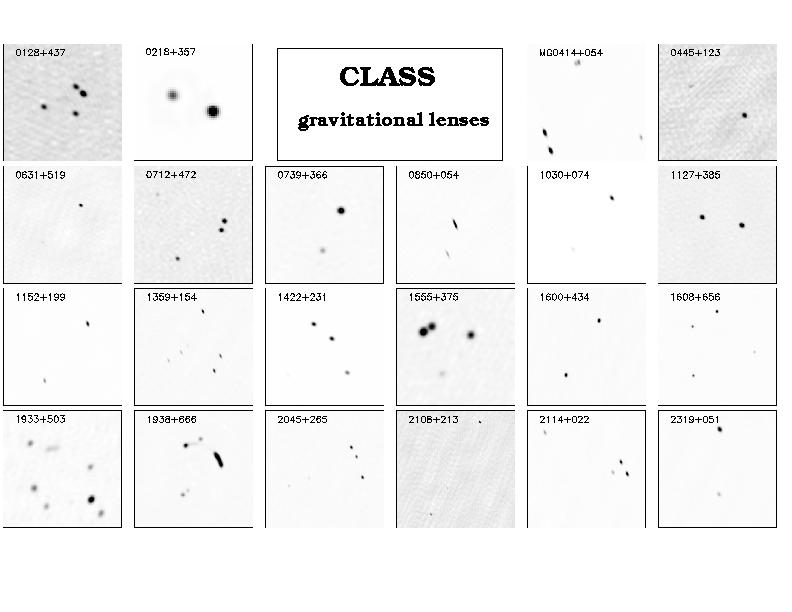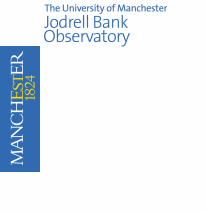The CLASS survey

The 22 gravitational lenses discovered in CLASS.
The CLASS survey was conducted between 1990 and 1999. It consisted of observations with the Very Large Array (VLA) of 16503 flat-spectrum radio sources. Such objects are usually quasars and have very simple radio structures; they are typically point sources, and occasionally weak extended emission is visible. The point-like radio emission is thought to originate from the base of a relativistic radio jet in an active galaxy, which points more or less at the observer.
The simplicity of these sources is useful for gravitational lensing searches. This is because any flat-spectrum radio source which has extended structure is a possible gravitational lens, as the extended structure could represent multiple images of a pointlike radio source, produced by the gravitational field of an intervening galaxy. (Usually, the intervening galaxy will not be seen in the radio map). In practice, a filtering operation, involving observations at successively higher resolutions with MERLIN and VLBI, was undertaken to separate genuine gravitational lenses from the cases where the extended structure was intrinsic to the quasar. The process is summarised in two papers describing the survey and the process of identifying lenses.
22 gravitational lenses were discovered in this survey, still a significant fraction of the known quasar lens systems. The survey generated many hundreds of research papers, and followup work by us and others on the lenses is still continuing. Significant scientific highlights include:
- Time delays between image variations in three objects, leading to determinations of the Hubble constant
- Likely non-smooth mass distributions in the lensing galaxies, possibly leading to detections of substructure
- Studies of mass distributions in galaxies at significant redshift
